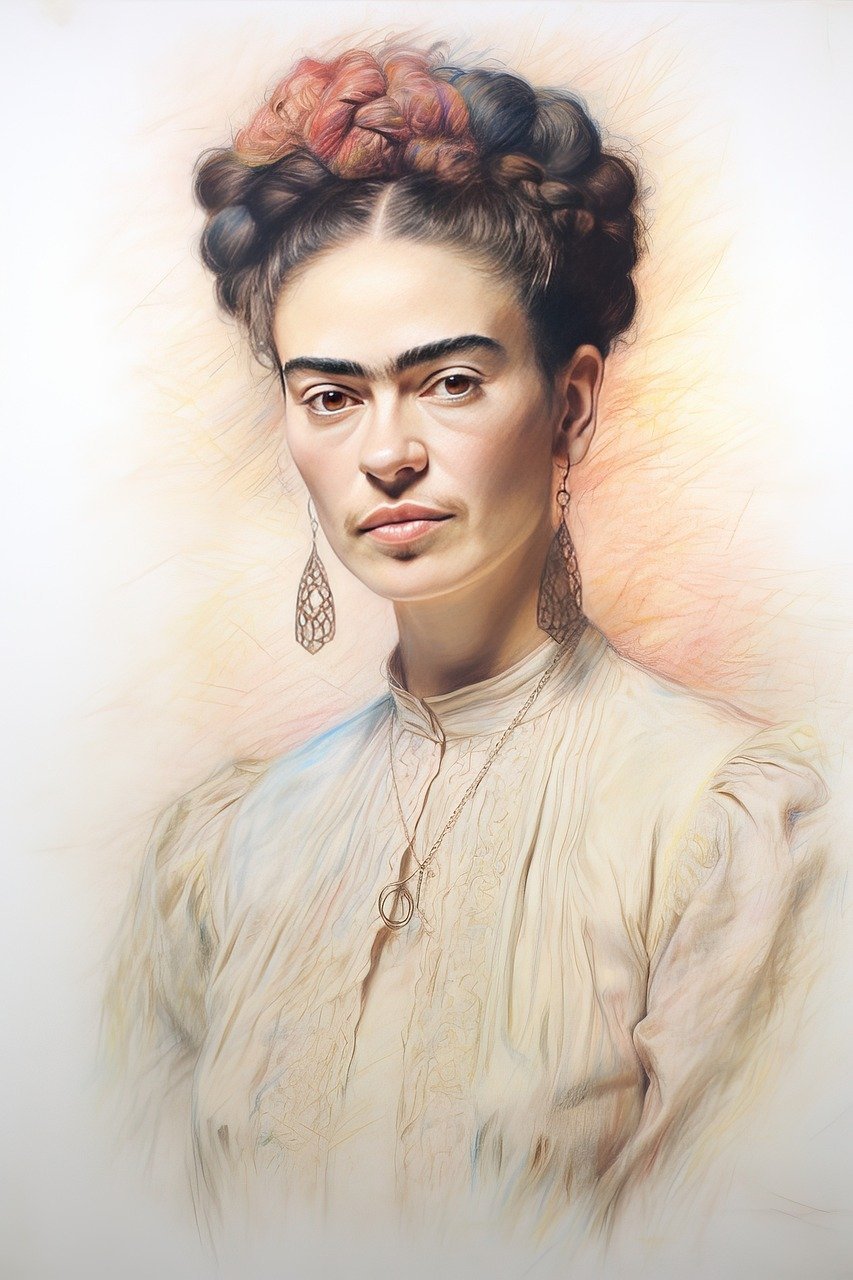Art has always been a powerful medium for self-expression and storytelling, and throughout history, LGBTQ+ artists have played a significant role in shaping the creative landscape. Among these artists, lesbian artists have made invaluable contributions, enriching the art world with their unique perspectives, experiences, and talents. In this article, we celebrate the creativity, resilience, and impact of lesbian artists who have defied societal norms and championed diversity and inclusion.
Visibility and Representation
Lesbian artists and women in general have long fought for their place in a predominantly heteronormative art world (check out the Guerilla Girls if you’re interested in the cause). By sharing their personal experiences, relationships, and identities through their work, lesbian artists have helped increase the visibility and representation of the lesbian community. In doing so, they’ve contributed to a broader cultural shift towards inclusivity.
Exploration of Identity
Identity is a central theme in the works of many lesbian artists. They explore the complexities of sexual orientation, gender identity, and the intersectionality of identity markers. Through various mediums such as painting, sculpture, photography, and performance art, lesbian artists challenge societal expectations and norms.

Frida Kahlo, a renowned Mexican painter, is a prime example. Her self-portraits are celebrated for their raw and honest exploration of pain, love, and self-acceptance. Kahlo’s art serves as a testament to the power of embracing who you are, no matter how unconventional it may seem to society (those of us millennials remember a time when thick eyebrows were not fashionable) what an icon.
The Politics of Desire
Lesbian artists often delve into the politics of desire, challenging the objectification and commodification of women’s bodies. Their work examines the complexities of love, desire, and relationships in a world that has often sought to suppress or fetishize these aspects of LGBTQ+ life.
The photographer Catherine Opie is known for her striking portraits, which explore lesbian desire, identity, and community. Her work humanizes and celebrates lesbian relationships, providing a counter-narrative to harmful stereotypes.
Social Commentary
Many lesbian artists use their work to comment on social issues and advocate for change. Their art becomes a platform for addressing discrimination, homophobia, and inequality, making a powerful statement that transcends boundaries.
The graphic novelist Alison Bechdel, known for her comic strip “Dykes to Watch Out For” and the memoir “Fun Home,” uses humour and candour to address LGBTQ+ issues and family dynamics. Her work has sparked important conversations about representation and acceptance. You may recognise her surname from the now common Bechdel Test in films. To pass the test a film must have two female characters talking to each other (preferably named) about something other than a man.
Related article: 6 Queer Illustrators to Follow
Breaking Boundaries
Lesbian artists have been pioneers in pushing artistic boundaries and experimenting with different forms of expression. Whether through innovative storytelling techniques or unconventional materials, they continue to challenge the status quo and inspire others to do the same.
The playwright and performance artist Holly Hughes is celebrated for her fearless exploration of sexuality and gender. Her groundbreaking performances have paved the way for a new generation of LGBTQ+ artists who refuse to be confined by traditional artistic norms.
Paving the Way
We can’t talk about breaking boundaries without also talking about the lesbian women artists who also paved the way for us, keeping their love secret whilst producing work that we still hear about today.
Virginia Woolf and Vita Sackville-West were two extraordinary women who shared a profound and complex bond that transcended the conventional relationships of their time. Virginia Woolf, a celebrated writer and a central figure in the Bloomsbury Group, brought a revolutionary narrative style to English literature. Her works, including “Mrs. Dalloway” and “Orlando,” explored the inner lives of her characters in a deeply introspective manner. Vita Sackville-West, on the other hand, was a prolific poet, novelist, and gardener, known for her vibrant personality and adventurous spirit. Their friendship, which eventually evolved into a passionate love affair, inspired Woolf’s novel “Orlando,” a groundbreaking exploration of gender identity and the fluidity of time. Their connection remains a poignant testament to the power of love, literature, and friendship that transcends societal norms and expectations.
Mai-Mai Sze and Irene Sharaff were not only distinguished in their artistic careers but also shared a deep and enduring love that added a layer of richness to their remarkable lives. Their love story, though not as well-documented as their individual achievements, is a testament to the power of love in the world of creativity.
Mai-Mai Sze, an accomplished Chinese-American artist and author, met Irene Sharaff, a renowned costume designer, through their shared passion for the arts. Their connection blossomed as they explored the intersections of their respective fields, finding inspiration in each other’s work. Mai-Mai Sze’s appreciation for the delicate intricacies of Chinese art resonated with Irene Sharaff’s eye for detail in costume design. Their shared appreciation for beauty and craftsmanship served as a powerful bond, leading to a romantic relationship that lasted for many years.
Their love was a source of strength and inspiration for both artists. While their individual careers continued to flourish, they found solace and support in each other’s company. Their story is a testament to the power of love not only in personal lives but also in nurturing and enhancing creative endeavours. Mai-Mai Sze and Irene Sharaff’s love story remains a beautiful and poignant chapter in the broader tapestry of their extraordinary lives.
Lesbian artists have made invaluable contributions to the world of art, enriching it with their diverse voices and experiences. Through their work, they have increased visibility, challenged stereotypes, and advanced the cause of LGBTQ+ rights. It inspires future generations like us to embrace their identities and speak their truths through art.
If we’ve missed any, let us know by commenting below.
Team Nonchalant x


